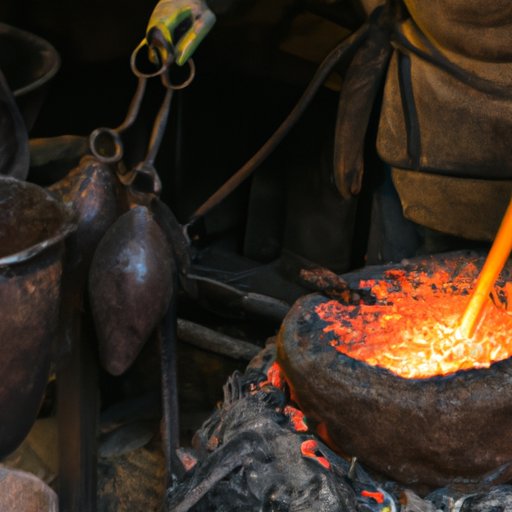
Introduction
Bronze has been a beloved material for over 5000 years and it continues to be a popular and unique metal in modern times. The beautiful sheen of bronze is not just appealing but it also has great durability and versatility. Making bronze may seem like a daunting task, but it’s more achievable than you think. This article will detail the essential tools and materials needed and a simplified, easy-to-follow process, so you can make bronze of your own.
Historical perspective
Bronze as a material has been a crucial aspect of ancient civilizations, and has been used to make a vast range of objects, including weapons, statues, and jewelry. The ability to create bronze using copper and tin was a turning point in history, and allowed for increased efficiency and the creation of more complex and durable items. Historical bronze-making practices varied by culture, but the basic principles remained the same: the combination of copper and tin in the correct proportions to create an alloy that is stable and strong.
Materials and equipment
Before starting the process, you’ll need to gather the necessary materials and equipment. You will require copper, tin, a crucible, a forge, tongs, a thermostat and a stirring rod. Copper can be sourced from wires, tubing, and other scrap items found in construction supplies stores or online. Tin can be found online as well. The crucible you use should be made from heat-resistant materials that can withstand high temperatures. The best forge to use is one that is specifically designed for metallurgy or melting metal. Tongs are necessary for holding the crucible and adding items to it safely. A thermostat at the forge is crucial to monitor the temperatures.
Step-by-step guide
The process of making bronze follows several steps.
Step 1: Measuring the materials
Begin by measuring out the right proportion of copper and tin, usually an 88:12 mix. The measurements should be precise, as any impurities can impact the final product.
Step 2: Preparing the crucible
Prepare the crucible, ensuring that it’s dry and free from any contaminants that could affect the alloy. Make sure to use tongs to handle the empty crucible.
Step 3: Placing the metals in the crucible
Position the measured metals in the crucible and place the crucible inside the forge. Turn on the forge and heat up gradually and consistently to 1500-1600°F/825-870°C.
Step 4: Stirring
Once the metals have melted down and combined, use a stirring rod to thoroughly mix the alloy.
Step 5: Casting
Finally, carefully pour the liquid alloy into your chosen mold and let it cool. Once cooled, remove the mold and clean and polish the surface of the bronze to get it shining.
It is crucial to take care during each step, monitoring temperature and using tongs and protective gear to avoid any injury.
DIY approach
Making bronze at home is an inexpensive process if you own a furnace or stove to heat up the metals. It does require more time and effort, but can be successful with the right tools. Begin by creating a safe and well-ventilated environment. Choose a recipe with a large margin for error like a 75:25 copper tin ratio. Heating is an essential part of the process and a gas or charcoal-fired furnace can be built inexpensively. Safety and caution are paramount when pursuing this approach.
Safety considerations
Bronze-making involves heating materials to high temperatures, which can release harmful gases and toxic fumes. Good ventilation is necessary for this process and a mask or respirator is necessary unless a fume hood is in place. Also, it is important to use tongs to handle the molten metal, as it can splatter or cause burns. Always wear protective gear like heat-resistant gloves and a long-sleeved shirt to protect your skin.
Troubleshooting tips
If you face any challenges, there are a few common issues that can arise, like inconsistent temperature, air bubbles, or impurities. These can occur when the elements are not thoroughly mixed or the heat is not consistent throughout the process. The solution to solve impurities in the mixture is to filter the contents. Use a thermostat to ensure constant temperature and stir thoroughly for uniform consistency.
Conclusion
Making bronze may seem complicated, but the skills are simple to master with the right materials, tools, and techniques. The rewards are abundant, with bronze being a valuable material and a great choice for making impressive and durable artwork. Remember to follow safety guidelines and take note of which tutorials and approaches work best. If everything is done correctly, your resulting bronze will be admired by craftsmen and art enthusiasts alike.




